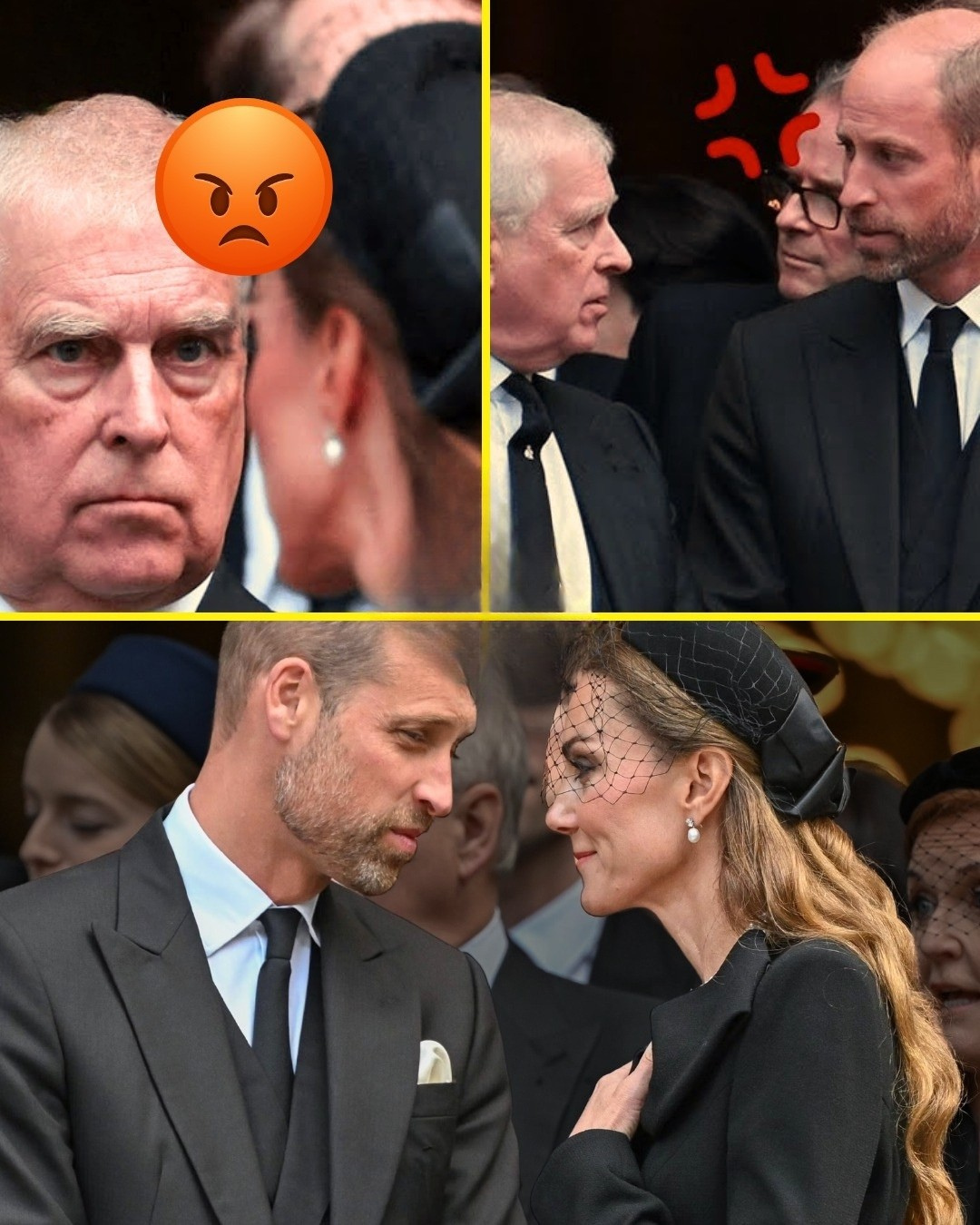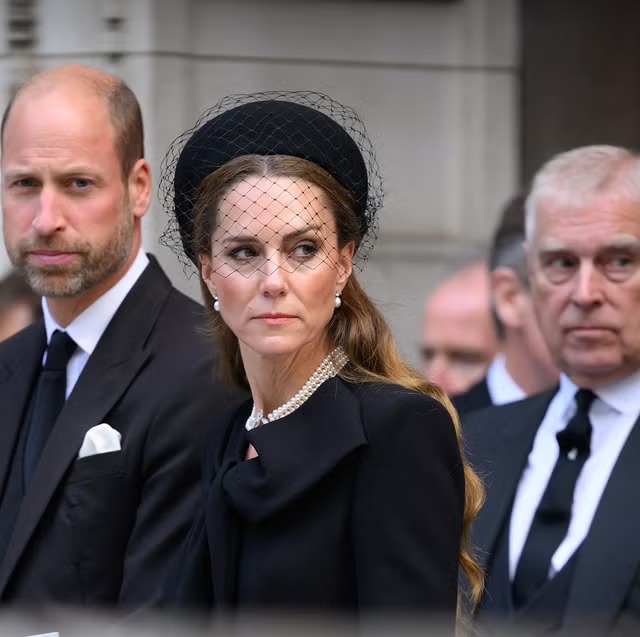
The funeral of the Duchess of Kent at Westminster Cathedral was a solemn occasion marked by unity in grief. Yet beneath the surface, tensions within the royal family were on quiet display, particularly between Prince William and his uncle, Prince Andrew.
Andrew, who arrived under police escort from Royal Lodge with Sarah Ferguson, maintained a somber presence among mourners. But royal watchers noted a fleeting moment when he turned toward Princess Catherine with what commentators described as a “look of ashes,” a pointed glance that seemed to betray years of unresolved discord.
Biographer Andrew Lownie, in his book Entitled: The Rise and Fall of the House of York, has written that Andrew resents Catherine’s growing prominence within the family, particularly since Queen Elizabeth II’s death. He claims Andrew once made “nasty and unkind” remarks about her, remarks born of jealousy rather than respect. “Catherine has been the saving grace of the royal family,” Lownie observed, voicing surprise that Andrew would harbor such bitterness given her central role in shaping the monarchy’s modern image.

At the service, William’s response appeared unspoken but unmistakable. Standing close to Catherine throughout, his posture protective, he seemed intent on shielding her from his uncle’s presence. Observers noted that the couple’s exchanges with Andrew were brief and perfunctory, a courtesy extended for the occasion rather than any gesture of reconciliation.
The contrast was clear: William and Catherine’s quiet unity—marked by moments of tenderness caught on camera—stood in sharp opposition to the frostiness surrounding Andrew.
For William, the divide goes beyond personal resentment. As future king, he has signaled a determination to keep Andrew out of the fold of working royals, prioritizing the monarchy’s integrity alongside King Charles, Princess Anne, and Prince Edward.
Andrew, stripped of his military titles and patronages in 2022 following his ties to Jeffrey Epstein and other controversies, continues to live in relative seclusion at Royal Lodge. Yet the shadow of scandal remains, complicating any attempt at familial harmony.
The Duchess of Kent’s funeral was, for most, a moment to remember a much-loved figure. For the House of Windsor, it also served as a reminder of the fractures that linger—fractures William seems intent on managing as he steers the monarchy toward its future.